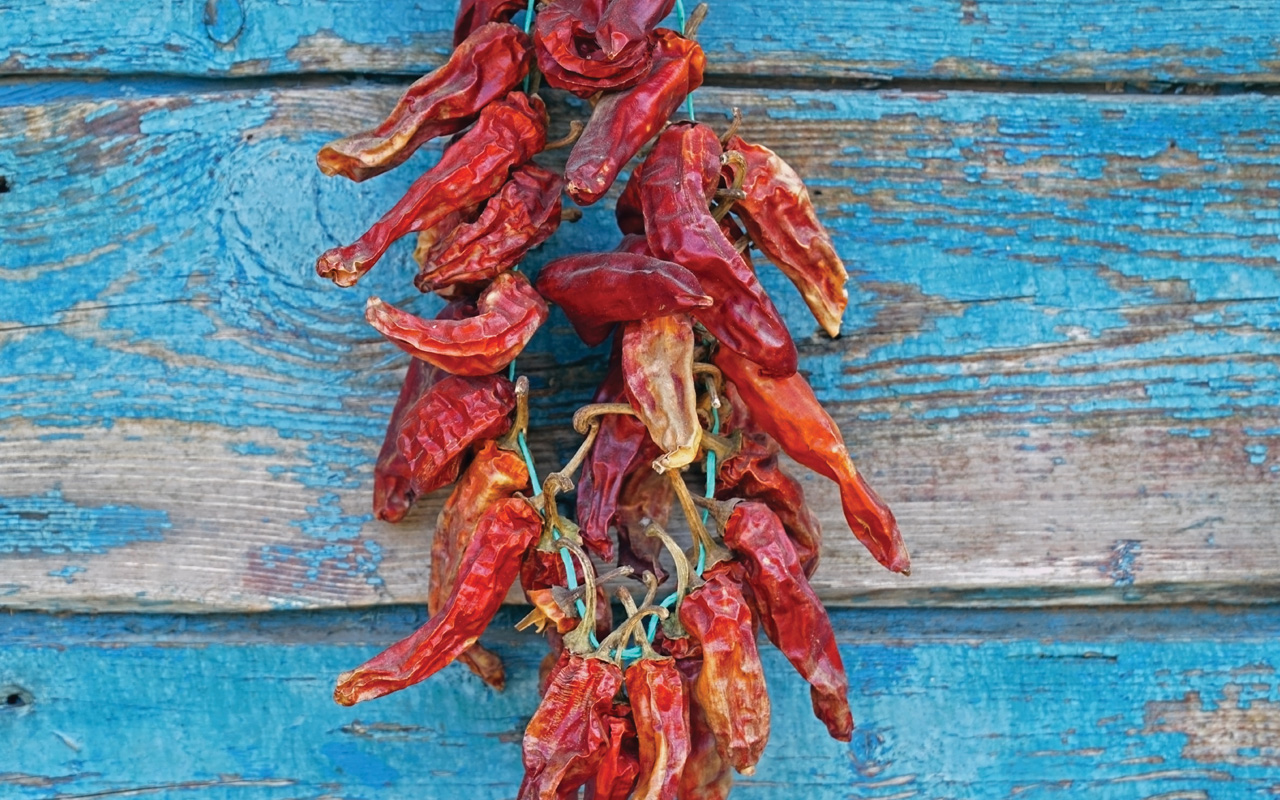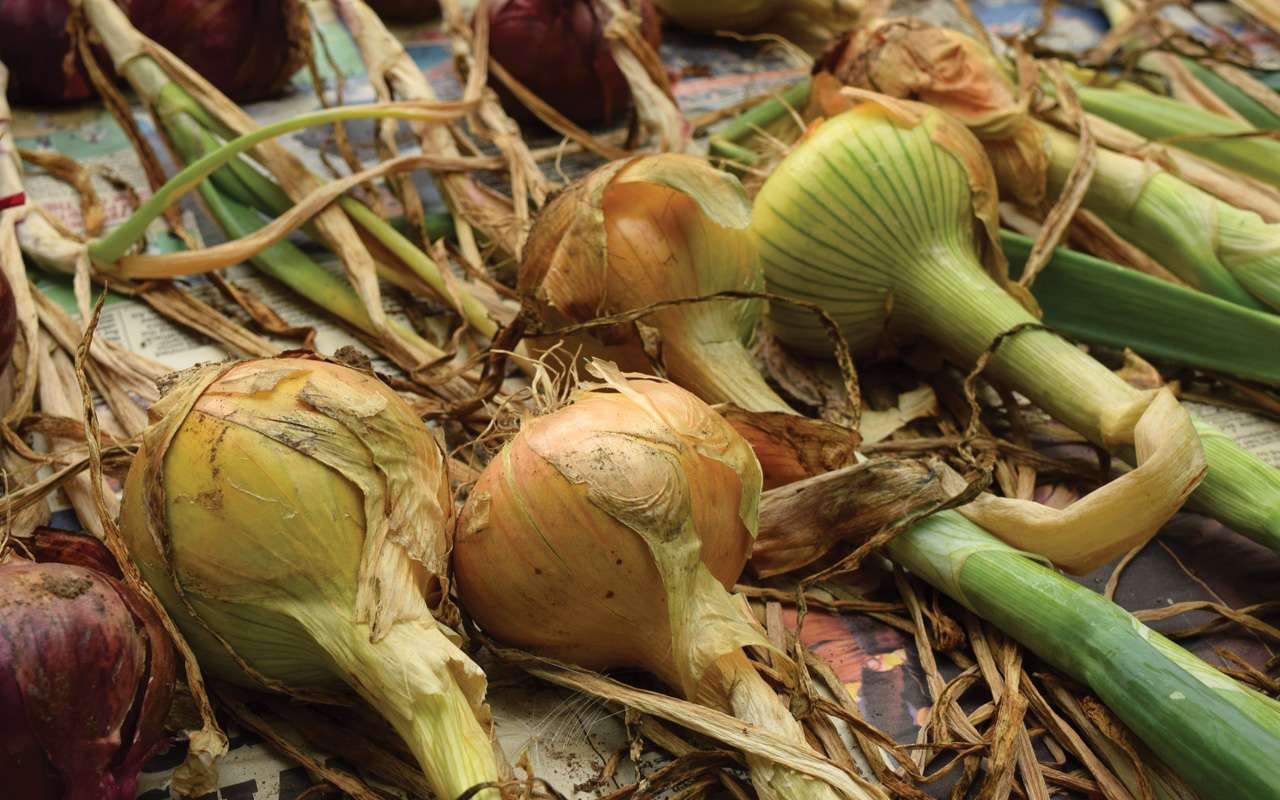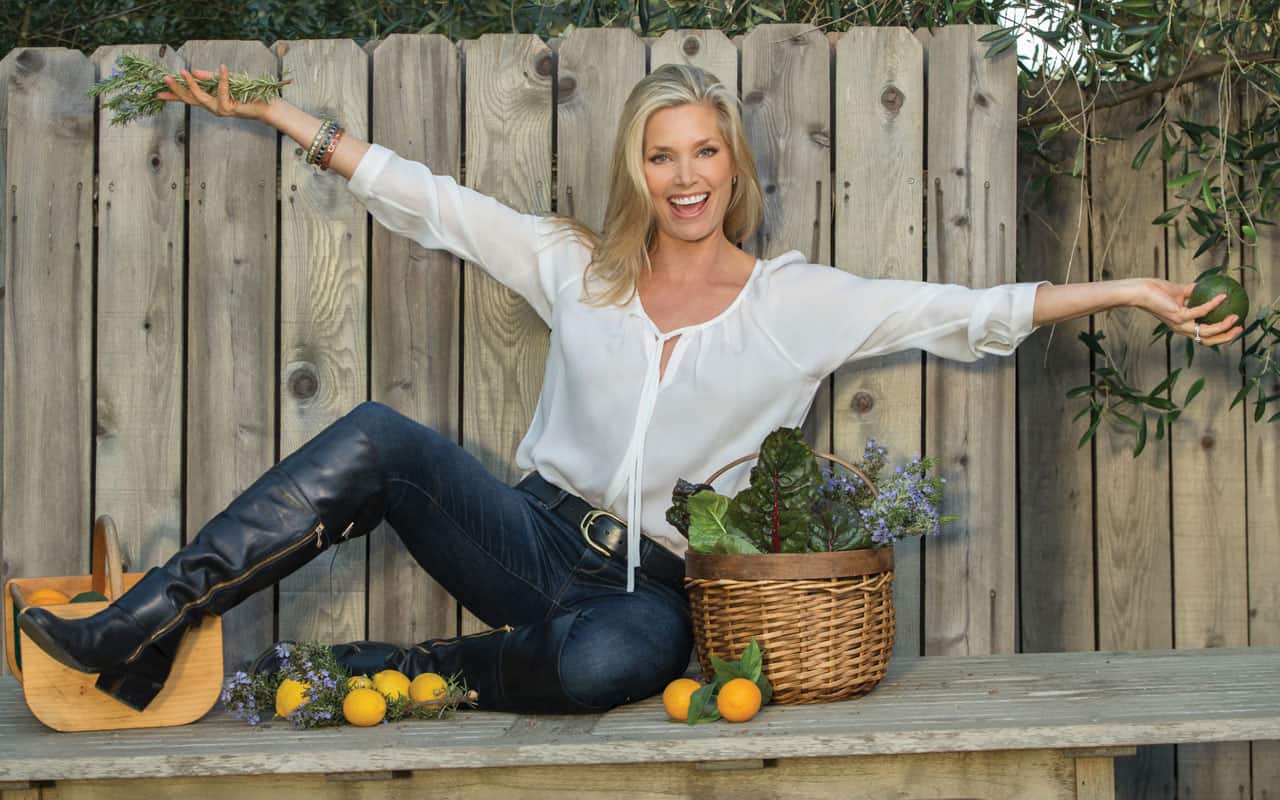
Your garden should be in high gear by June. With hot temperatures and warm soil, plants have settled in and should be growing strongly. Numerous blooms are turning into a delicious harvest. By July, the summer heat is inescapable, and you should be busy watering and gathering your crops. Hurry up because you need to sow the last warm season vegetables by the end of July. One thing is for sure, it’s hot out there! Here are some crucial tips to ensure a prolific, healthy garden during the hot summer months.
PLANTING IN THE HEAT
There is still time to transplant basil, beans, celery, chard, corn, cucumbers, dill, kale, leeks, summer-maturing lettuce, okra, green onions, melons, white potatoes, pumpkins, summer savory, New Zealand spinach, and summer and winter squash.
• Always transplant in the late afternoon or evening so your plants have the whole night to recover before a full day of sun and heat.
• Keep soil around transplants moist for at least a month until they’re well-established.
• Provide shade from the intense mid-day sun for the new transplants until they get established.
• Mulch transplants to lessen evaporation. Water well before applying the mulch, to insulate the wet soil.
• A two-to-four-inch layer of mulch decreases evaporation from the soil by 70 percent or more. Remember to keep mulch several inches away from plant stems.
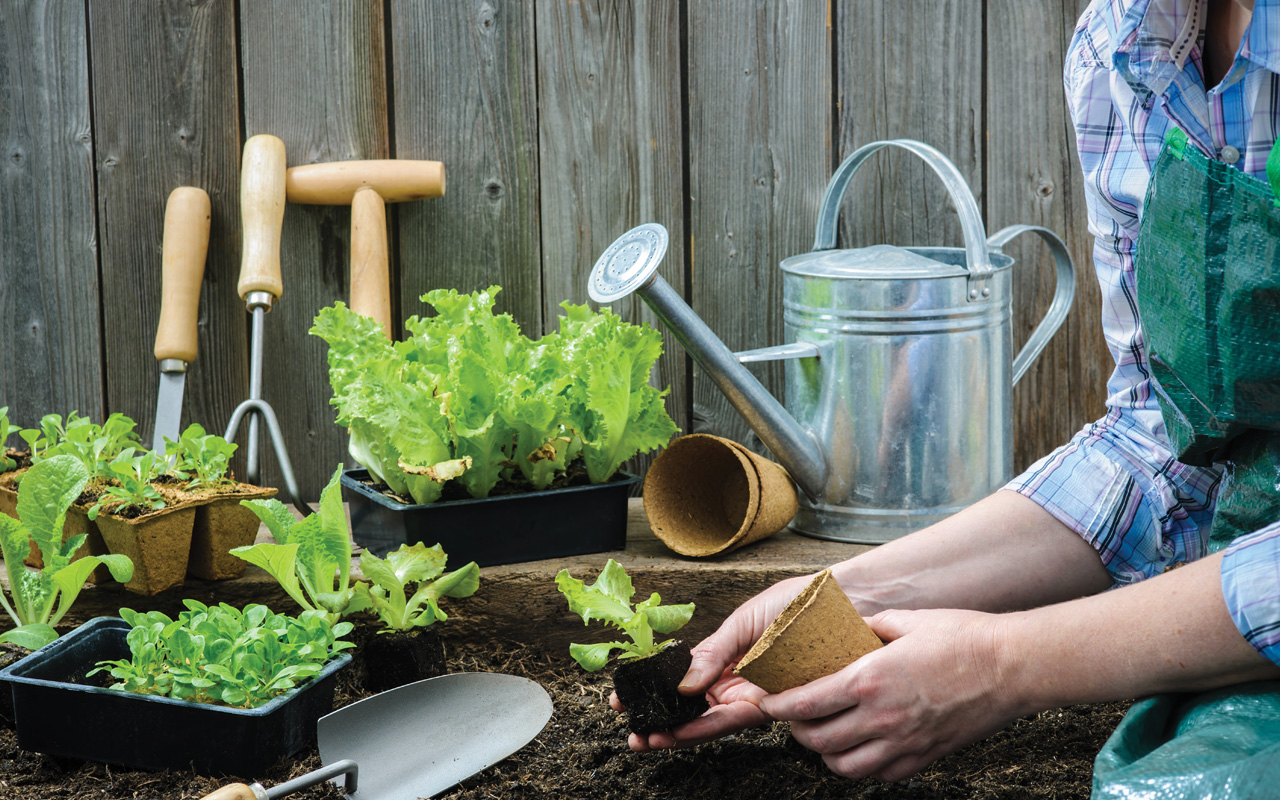
Transplanting lettuce
GROWING FROM SEED IN THE HEAT
For better seed germination during summer’s heat, use these techniques.
• Sow seeds thickly in flats or beds.
• Mulch the seeds thinly with sifted compost.
• Sprinkle the flats or beds to keep them moist often; or leave a mister on for about 10 minutes several times each day.
• Shield the bed from the heat with a piece of burlap or shade cloth. This keeps the seeds cooler than the air temperature while giving them the moisture they need, and it keeps the soil surface from crusting.
• Remove the shade fabric after 1/4 of the seeds have germinated while keeping the bed moist until the rest of the seedlings emerge. Place flats in an area with less than a full day of sun and keep them moist.
• Transplant seedlings when the second set of leaves develops.
IRRIGATION IN THE HEAT
The amount and frequency of irrigation that your garden needs, is determined by the weather and texture of the soil. Heavy clay soils require less water than sandy loam soils.
• During hot weather, plants need more frequent and longer irrigation. Beware, too much water causes soil soggy which increases root rot problems.
• Tomatoes and other large plants in loamy clay soil use about one inch of water in three days of hot dry weather.
• Rinsing the undersides of leaves with water will discourage spider mites. Tomatoes and eggplants especially like this refreshment. Shower them in the morning before it gets too hot.
• Water and fertilize melons deeply once a week for juicy, fleshy fruits. Stop irrigating melons a week before harvesting so their sugars will concentrate.
• If onion and garlic foliage has not yet slumped and dried, stop irrigating, and bend the stalks to the ground. Allow a month or so for them to dry prior to harvest.
• Soak strawberry beds and fruit and nut trees every other week if the weather’s especially hot.
• Plastic gallon jugs with their bottoms cut out and caps removed can be used twice a year when starting seeds and setting out plants when nights are still cool. When it’s hot, invert the jugs and bury their necks into the soil, for use as funnels for irrigation and liquid fertilization.
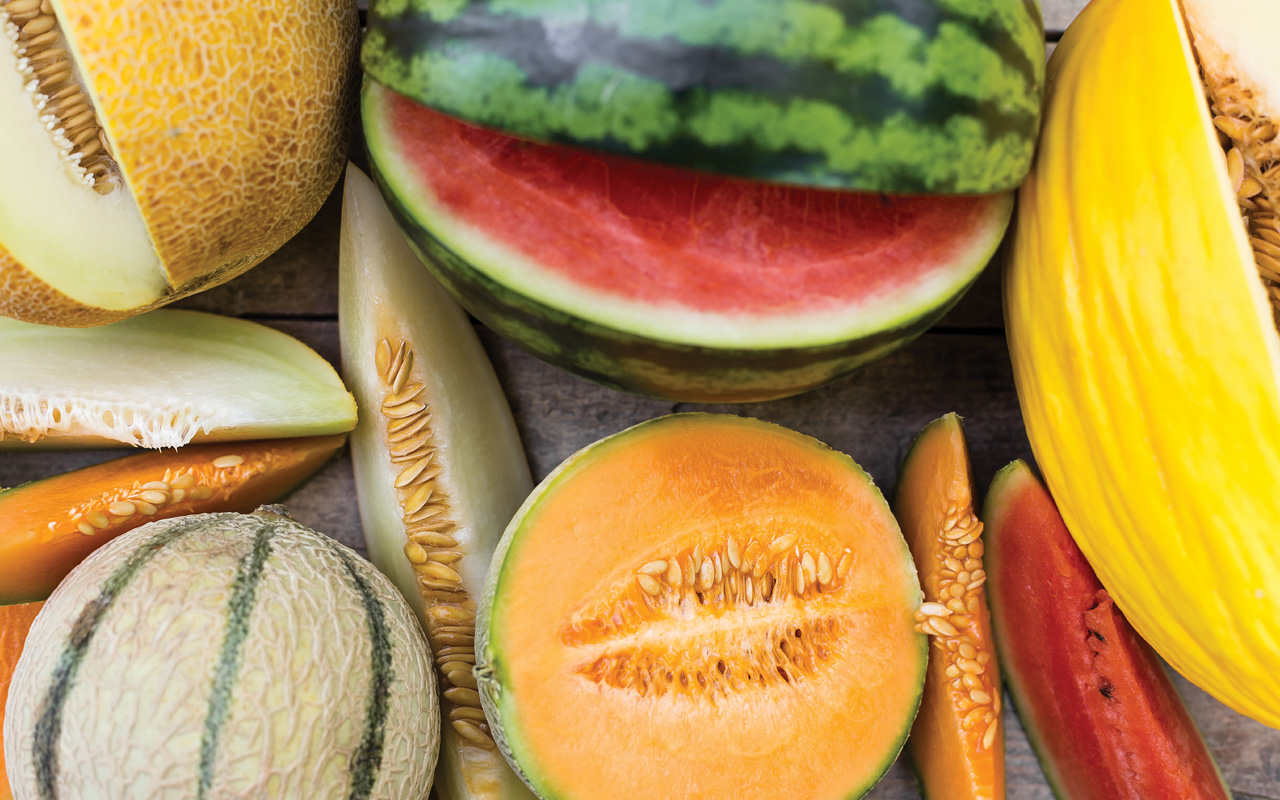
Different types of melons
PROTECTING SUMMER’S HARVEST
• Protect vine crop fruits like melons and squash from snails and slugs by lifting the fruits or vegetables onto cans, berry baskets, or boards.
• Also, spread crushed eggshells under plants; snails and slugs will avoid the sharp particles.
• Metal cans speed ripening and sweetening of melons by concentrating the sun’s warmth and transferring it to the melons.
• Place ripening melons onto upside-down aluminum pie pans to keep them off damp soil. The reflected heat and light will help them ripen evenly and sooner than when they are shaded by foliage.
• Harvest beans, cucumbers, squash, and tomatoes at least every other day to encourage production. When you allow fruits to remain on the plant, the hormones will change so there will be less new blossoms to set new fruit.
• Pinch back herbs to encourage branching. Herb’s flavor is at its peak just before they flower.
• Harvest herbs early in the morning after the dew has dried but before the day becomes warm and the fragrant oils dissipate. If you can smell them, wait until the next day before harvesting because their fragrant oils have vaporized into the air.
STORING SUMMER’S HARVEST
• Use drawstring net bags from store bought apples, onions, and potatoes to dry whole herb plants. Hang the bags on hooks. The netting allows air circulation but contains most dry crumbled pieces.
• Avoid bruising the onion bulbs during harvesting. Let them cure in a single layer on slats or screens in a dry, well-ventilated place. Store when the foliage and outer layers are dry and papery. Store them in a cool, dry place where air can circulate. Bulbs that are not thoroughly dried, should be used first because they will spoil in storage.
• Preserve peppers once harvested. Slice and dice the whole peppers. Spread them on a cookie sheet and freeze them. Pack the frozen pieces into large containers and use as desired. Once thawed, they are great for recipes to be cooked.
• To dry chili peppers, pick them when they’re deep red, and hang them in a sunny place until they’re brittle. Cut the larger peppers in half or into pieces and dry. Store dried peppers in moisture-proof containers in a cool, dry, dark place.
• Freeze whole tomatoes for cooking later. After slight thawing, cut out the core, and squeeze from the blossom end. The pulp will emerge easily and can be used in any recipe.
Well, the heat is here, and it is only going to get hotter, reminding us we still have a lot to do in our gardens. Harvesting those summer crops, keeping our garden hydrated and protecting the vulnerable seedlings and transplants from the overbearing heat, is important. But, isn’t that why we grow our own food?!
It is a labor of love.
Kelly Emberg, the model gardener
For more gardening tips, follow me on Facebook, Instagram, YouTube & Twitter.
www.kellyemberg.com

